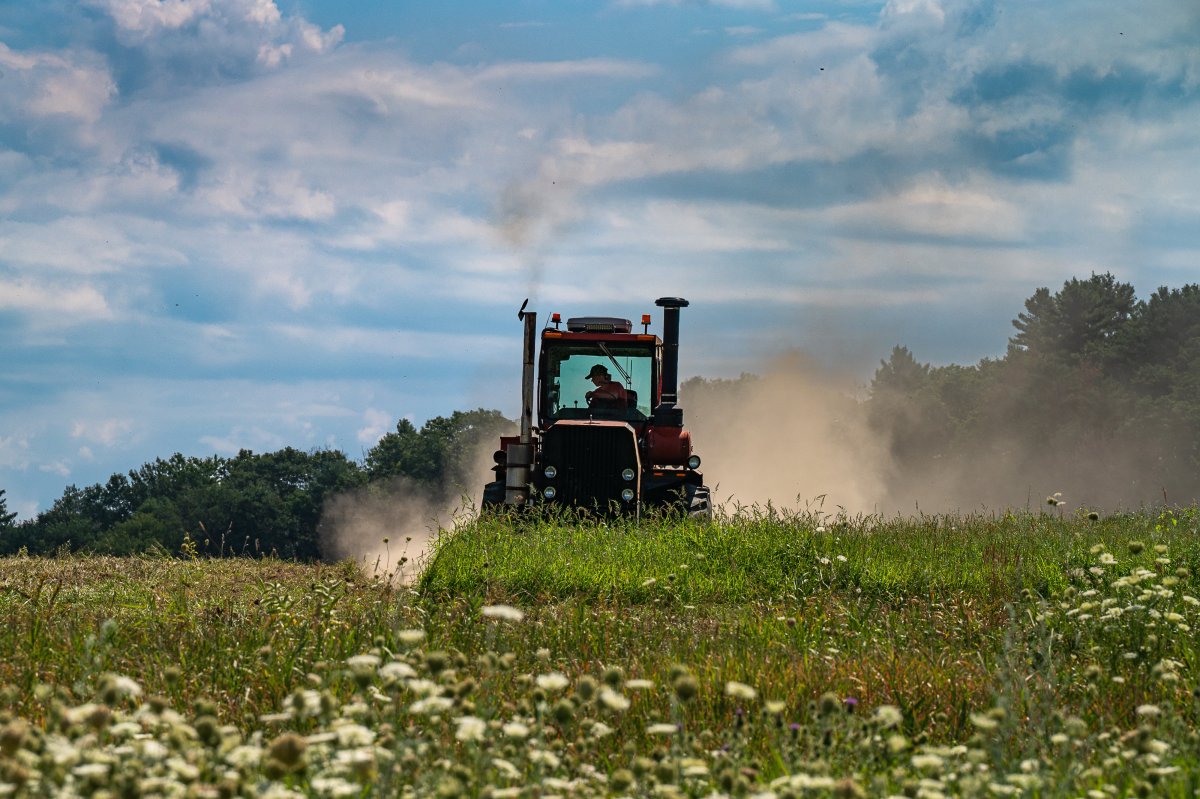
Maine farmers impacted by the state’s monthslong drought can now apply for emergency loans from the federal government.
The Maine Emergency Management Agency announced Monday that the U.S. Department of Agriculture has declared the drought a natural disaster, allowing the USDA’s Farm Service Agency to take applications for emergency loans.
The emergency loans can be used to restore or replace property, equipment and livestock, as well as to cover product costs, pay essential living expenses and refinance debts, pending eligibility.
All 16 of the state’s counties are included in the disaster declaration, with 10 considered primary counties.
“Almost every sector of Maine agriculture has suffered losses from this year’s drought,” said Tom Gordon, soil and water conservation program coordinator at the Maine Department of Agriculture, Conservation & Forestry. “These emergency federal programs will provide some economic relief for farmers as they prepare for 2026.”
The disaster declaration is split into two.
The first declaration lists Androscoggin, Cumberland, Franklin, Kennebec, Oxford and Somerset as the primary counties impacted. Contiguous counties that are also eligible include Aroostook, Lincoln, Penobscot, Piscataquis, Sagadahoc, Waldo and York counties. Farmers in those counties have until May 22, 2026, to apply for loans.
The second — with Hancock, Knox, Waldo and Washington as primary counties and Aroostook, Kennebec, Lincoln, Penobscot and Somerset as contiguous counties — has an application deadline of June 1, 2026.
In its declaration, the USDA said the counties either suffered from severe drought for eight or more consecutive weeks or faced extreme or exceptional drought, citing the U.S. Drought Monitor.
The drought began to escalate in mid-August as abnormally dry conditions persisted through the heart of the summer and into the fall. Farmers have reported that their crops were deprived of critical water during the growing season, causing a reduction in production of blueberries, apples, hay and other crops. The drought has also caused wells to run dry, bodies of water to run low and the number of wildfires to increase.
Conditions have improved slightly since late October — when nearly half of the state’s land area and over 1 million of its residents were in extreme drought — but all of Maine is still in at least moderate drought, according to the drought monitor. Barring a sudden and historic amount of rainfall, the dry conditions will continue into the spring, at which point snow melt should help to recharge groundwater supplies.
The Farm Service Agency will review loan applications based on the extent of losses, security available and repayment ability, according to the declaration.
The agency’s press office did not immediately respond to questions Monday afternoon seeking more information about the declarations.

We invite you to add your comments. We encourage a thoughtful exchange of ideas and information on this website. By joining the conversation, you are agreeing to our commenting policy and terms of use. More information is found on our FAQs. You can modify your screen name here.
Comments are managed by our staff during regular business hours Monday through Friday as well as limited hours on Saturday and Sunday. Comments held for moderation outside of those hours may take longer to approve.
Join the Conversation
Please sign into your CentralMaine.com account to participate in conversations below. If you do not have an account, you can register or subscribe. Questions? Please see our FAQs.